The best launcher apps for iOS
A good launcher app can vastly speed up many of the everyday tasks you do on your iPhone or iPad. But which ones are the best? (Hint: We love Launch Center Pro.)
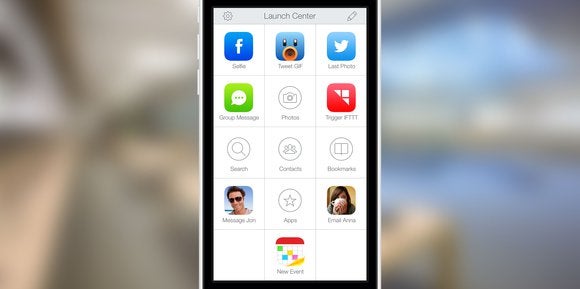
Launcher apps take this concept to another level. Where Apple’s solutions add up to little more than secret passages and hidden shortcuts, launchers provide a centralized place where we can manage and organize our favorite apps and everyday tasks into a single, contained system. While they’re not quite as powerful or convenient as the ones on our Macs (mostly due to the lack of keyboard shortcuts), launchers on iPhone
However, not all launchers are created equal. While I can recreate the rudimentary task described above in any of them, the ease and speed of use can vary greatly. There’s a perception that launchers
Above all, launchers need to make our lives easier. It’s not just about cutting down on taps—it’s about creating an experience that operates on
Winner: Launch Center Pro
If not for Launch Center Pro ($5), the idea of the iOS launcher would probably still be in the planning stages. Contrast
For a powerful productivity app, Launch Center Pro’s simplicity is stunning. The interface consists of 15 squares inside has given
But what truly sets Launch Center Pro apart from the field is its third-party app support. An exhaustive catalogue of apps are
In addition to shedding the tedium from tasks like searching through a mountain of contacts or capturing thoughts before they escape, the app also integrates with the popular IFTT to trigger recipes for things that go beyond the scope of your iPhone, like turning on Hue lights or adjusting your Nest thermometer. Furthermore, actions can be scheduled to launch at determined
But even if you don’t take advantage of its advanced features, Launch Center Pro still offers a bountiful array of shortcuts to simplify life on your iPhone. Even if you’ve become a wizard at navigating your home screens by touch, Launch Center Pro can still enhance your iOS experience in wonderful ways. It’s so good in
The app’s friendly interface makes it so the learning curve is only as steep as you want it to be. If you’re looking for an easy way to access your favorite apps without messing with your home screen layout, it can do that, but even beyond its most basic function, Launch Center Pro doesn’t necessarily require an understanding of how it works. Power users can dig as deep as they want, but the “Pro” surname need not scare away novices.
The beauty of the app is how it manages to simplify the inherent complexity of what it does. Even with extensions, Apple has gone to great lengths to keep the iOS framework as basic as possible, and Launch Center Pro manages to adhere to that doctrine even as it augments it. Simply put, no other launcher I tried was able to match Launch Center Pro’s speed and dexterity,
So for this roundup, there won’t be a runner-up. Rather, I have collected a series of apps that either argument Launch Center Pro or fill the small voids it leaves. If you want a complete shortcut solution for your iPhone, Launch Center Pro isn’t just my top recommendation for an everything launcher, it’s my only one.
Best for automation: Workflow
When I started this roundup, I assumed my winner and runner-up would be Launch
It’s not even really fair to call Workflow a launcher. Where Launch Center Pro is at its heart an environment for simple shortcuts like opening
But while you can use it to launch apps if you must, it’s far better served for condensing a complex series of steps into a single button. Some of the sample
It’s not so much that Workflow can do things Launch Center Pro can’t, it’s that they work incredibly well together, so much so that one of the options in Workflow’s action composer is adding it to a free spot on your Launch Center Pro home screen. And with an excellent use of iOS 8’s extensions, you rarely even have to open the app on its own unless you want to create a new action or workflow.
Like Launch Center Pro, a deep knowledge of URL schemes will help unlock Workflow’s tremendous power, but the app does a remarkable job keeping things as simple as possible, offering a tremendous library of stackable automators
Best for contacts: Contact Center
Launch Center Pro does plenty of things to make it easy to call, text, and message our friends and loved ones, but those who have a lot of people to interact with each day will be better served by checking out Contrast’s other launcher app.
Contact Center (free) looks and acts so much like Launch Center Pro, I’m surprised the two apps haven’t been merged by now. It would be easy to add a dedicated screen just for contacts, but keeping it separate does have its charms, freeing up space for extra workflows in the main app and allowing for super-fast messaging in gifs
Best for writers: Drafts
There are myriad ways to take notes on our iPhones, but getting our words out of the app they’re inside isn’t always so easy. Drafts ($10) understands this problem. More of an idea organizer than a text editor, the app doesn’t just capture what you’re thinking—it gives you complete control over how, where, and when your thoughts are used.
Drafts looks like any old iOS note taker when you start composing, but the sharing icon in the top-right corner sets it apart from its competitors. Tap it and you’ll find far more than the usual pop-up sheet—a whole universe of actions become undangle
Best widgets
Being able to launch apps and actions just by swiping down from the top of the screen might be the best use of the Notification Center widget system, so it’s a bit surprising that Launch Center Pro doesn’t have one yet. But there are a couple of excellent options out there.
Launcher (free; $5 in-app purchase for Pro version) made a name for itself after it was tossed from the App Store over a “misuse of widgets.” We’re still not completely sure what Apple’s exact problem with it was, but it was allowed back some six months later, and it’s just as great as it was back then. Divided into four categories—contacts, websites, apps, and custom—the app doesn’t reinvent the wheel, but it does add a nice layer of grease. The apps and actions you create within the app are mirrored
While Launcher will likely suffice for most shortcut seekers, the aptly named Launcher Widget (free) adds enough creative flourishes to elevate it above its seeming copycat status. My favorite is the ability to resize individual icons, turning mere shortcuts into super shortcuts and letting you quickly identify your most commonly used apps. There are other quick settings in the composition window that set the interface apart from Launcher’s, but both apps offer an extremely similar set of features, and whether you choose the original or its descendent, you won’t be disappointed.
Additionally, music lovers should check out Music Launcher (free; $3 in-app purchase for Pro version), which puts your favorite songs and podcasts right in your Notification Center for easy playback. If you spend a lot of time navigating to your music app of choice, this will be a godsend. Just pick the songs or podcasts that you want to add and all you’ll need to do is pull down the Notification Center to access them. And you can even shuffle, skip and repeat tracks right in the widget.
Honorable mention
Alloy ($6) is an app that’s easy to overlook (as I write this, in fact, it doesn’t have enough ratings to generate a star average), but there’s a lot to like about it. The interface doesn’t quite have the sophistication of Launch Center Pro, but there’s a definite thoughtfulness to the experience. It’s sort of like a mash-up
The library of bundled actions is far smaller than Launch Center Pro’s, but something about Alloy kept it on my radar even as I tested other launcher apps—it’s not able to live up to the high LCP bar in its current incarnation, but with a little polish, a price cut

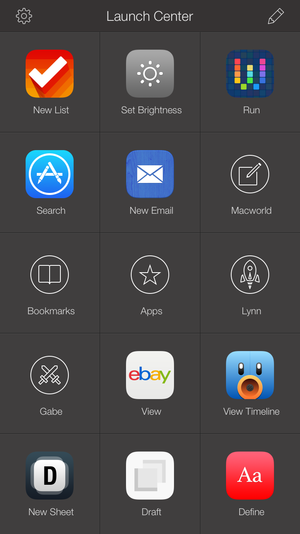
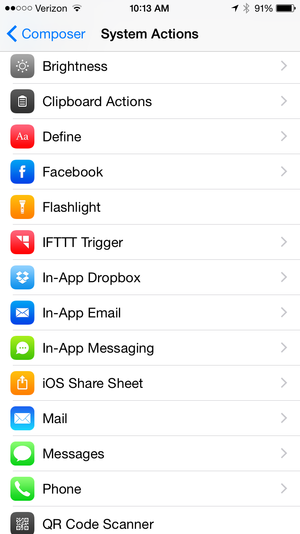
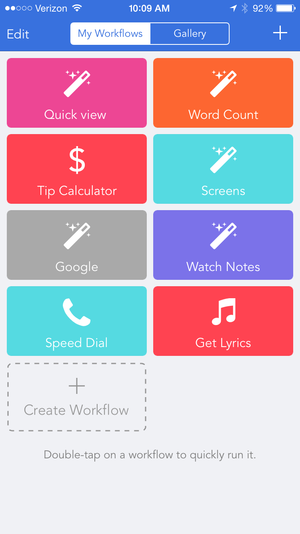

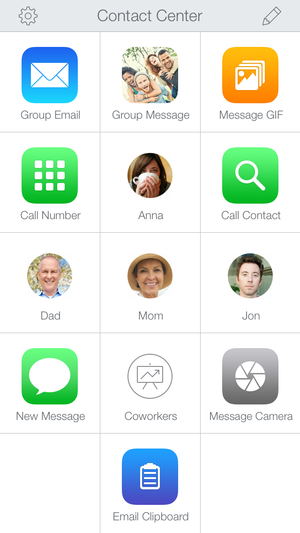
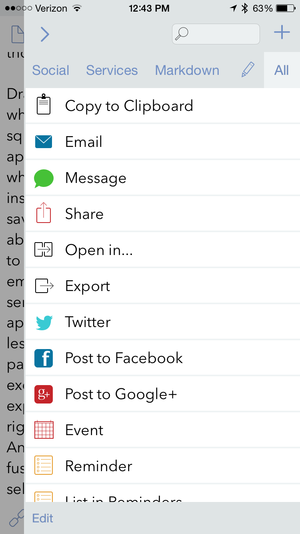
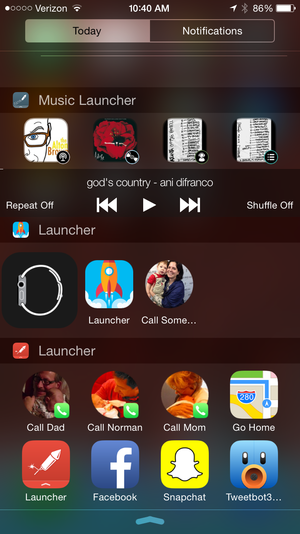
Blogger Comment
Facebook Comment